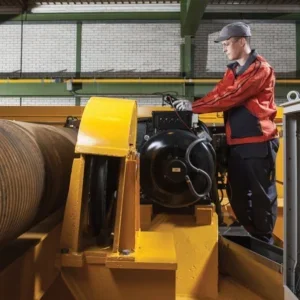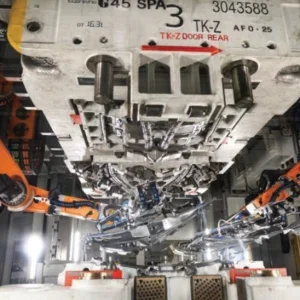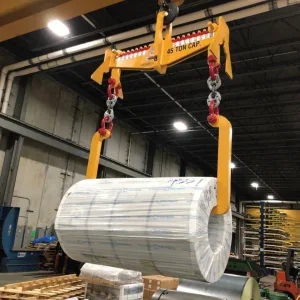Not only is it home to a disproportionate number of the industry’s leading manufacturers, Germany is also one of the biggest consumers of mobile cranes in the world. And traditionally it is the biggest market for all-terrain mobiles. In other words, it is a market that matters.
Sales of new mobile cranes there, however, have been declining. Even though the German economy recorded its strongest growth for a decade last year, mobile crane deliveries were down 3.2%.
This year, the wider economy is slowing again (with the government blaming mostly external factors such as the US slowdown). Mobile crane sales were down by between about 15% and 17% in the first five months of the year. We shall have to wait and see whether the Bauma effect will kick in and turn things around.
Bauma – the world’s biggest exhibition of construction equipment – is held every three years in Munich. Manufacturers release new models, and latent demand (in a good year) is released. You will not need to be told that the most recent Bauma was held in the first week of April this year. So far the evidence suggests that Bauma has not rejuvenated the German market.
Government registration statistics (Flensburger Zulassungsstelle) show that the total number of mobile cranes registered in Germany by Demag, Grove, Liebherr, Tadano Faun and PPM in 2000 was 714, of which about 670 were all-terrain models. In addition to these, about 130 to 140 small two-axle cranes, mounted on commercial Mercedes or MAN chassis were delivered, typically to contractors erecting prefabricated housing.
According to Liebherr, the Flensburger figures can overstate the German customer base as cranes are sometimes registered in the home market and immediately exported. According to Liebherr, the actual number of ATs delivered in 2000 was nearer 630 units.
While the manufacturers seem to use slightly different statistics for their benchmarking, Grove, Tadano Faun and Liebherr all agree that the German market was down last year. Grove says that the market was down 3.2% (by units delivered, not by value) while Faun says it was 5.6% down. The AT market, according to Faun, was 3.2% down, while Liebherr reckons it was 8% down.
In the first four months of 2001, AT sales fell to 190 units from about 220 in the same period last year. Sales of all mobile cranes in this period were 249 units, according to Tadano Faun, down from 285 in the first four months of last year.
Tadano Faun says that there was ‘a good boost noticed from Bauma’. It says that it had sold 50 units by the end of the fifth month, taking it more than halfway past its 2000 sales figure.
Figures provided by other manufacturers, however, suggest that Faun had delivered 30 ATs by the end of May. In the same period Grove sold 58 units to German customers, compared with its 135 shipped in the whole of 2000. Terex PPM of France recorded 18 sales in Germany, while Demag scored 46.
Liebherr remains the clear market leader, but even its German sales appear to be down. It shipped 282 units to German customers last year. After five months of 2001, it had sold 102 units.
In recent years the story of the German crane industry has been the erosion of Liebherr’s dominance. Faun, Demag and Grove have all taken market share back from Liebherr which had gained a massive lead in the years before Grove revived the former Krupp product line, before Demag had entered the smaller AT market, and before Faun had its successful 60 tonner. These three are all providing stronger competition for Liebherr. It should be noted, however, that Liebherr not only still maintains a market share of about 40%, it has this year increased its manufacturing capacity by 40%.
Coming from a position of relative market weakness, Faun, Demag and Grove have also benefited more than Liebherr, some suggest, from the break-up of the German rental market which has seen the dominance of Breuer replaced by a more balanced market with more smaller players. With more customers to chase, it becomes harder for one manufacturer to dominate. Grove, for example, has now taken an order from Schmidbauer, a firm Liebherr customer, and Berlin-based Brandt is taking delivery of five GMK 4075s and a GMK 5200.
Although its three-axle GMK 3050 is Grove’s best seller, its strongest market share in Germany is in the five-axle class, where Grove offers the 100t-rated GMK 5100 and the 180t-rated GMK 5180. These two cranes give Grove nearly 35% of the five-axle class. Grove also delivered four of the eight units in the six-axle class that were shipped to German customers in the first five months of 2001.
Faun’s best seller is undoubtedly its ATF 60-4, the one crane in its class with two engines. Faun says that the ATF 60-4 has more than 20% of its class in Germany. The ATF 45-3 (the only 45t on the market) and ATF 80-4 also have good market share.
Liebherr’s best selling models are its LTM 1060/2 and LTM 1100/2. The LTM 1060/2 has 70% of the German market in the 60t class, Liebherr says.
Demag has had massive success with its smaller cranes, the AC 25 and AC 40-1, as well as its AC 100. With the 60t class proving a success for bother Liebherr and Faun, it will be interesting to see how Demag’s new compact offering in this class – a four-axle, single cab city crane – goes down with the crane buying public.
When the figures are finally analysed at the end of the year, it seems unlikely that 2001 will have been a spectacular year, in spite of it being a Bauma year. It may, though, end up being – at the very least – moderately healthy.






